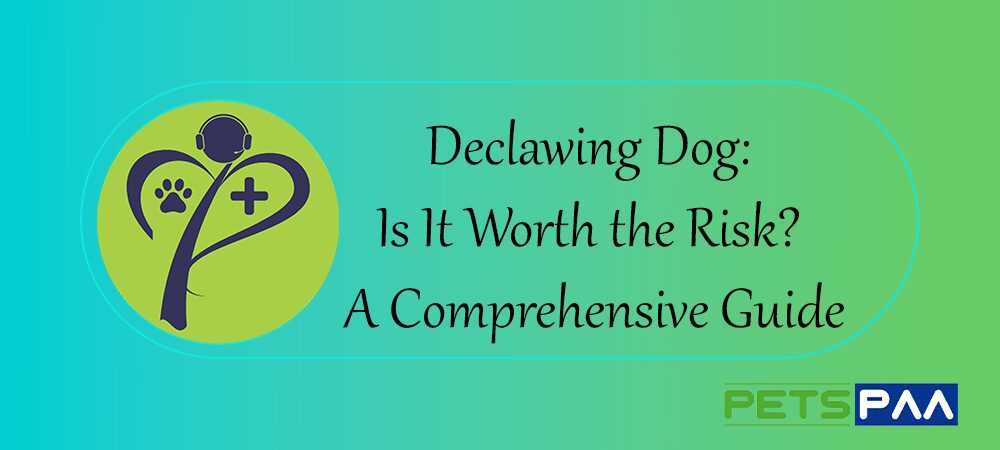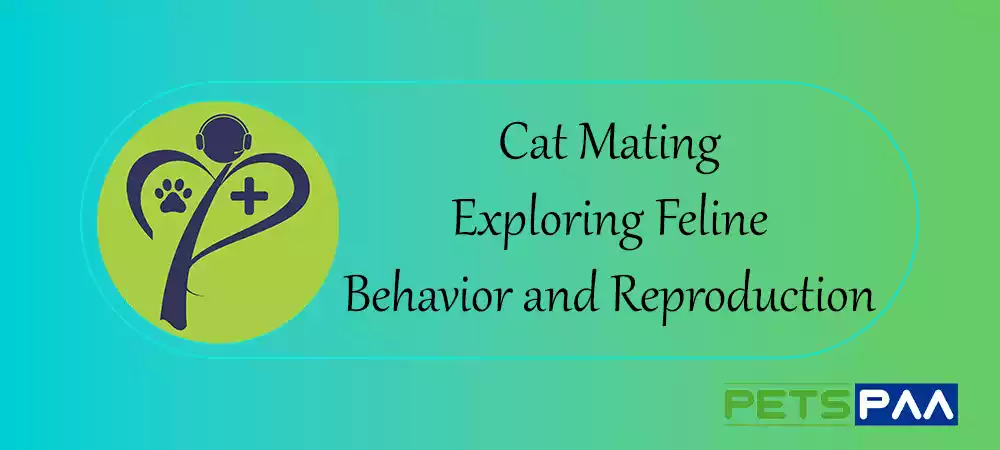Declawing dogs is a matter of debate, to get deep insights into the topic, firstly it is important to know what a declaw is, its anatomy, and its functions. What are the probable concerns with declaw, as well as the pros and cons of this procedure? This comprehensive guide will give you a to z information, which you need to make the right as well as the informed decision about the declawing dog.
Table of Contents

Introduction
Welcome to our in-depth guide on declawing dogs. As a responsible dog owner, you must understand the reason for dewclaws and how to avoid or prevent it. This comprehensive guide will give all you need to know about declawing dogs, from their introduction to their probable effects.
What is Declaw
Dewclaws are the small, extra claws on the inside of your dog’s front legs and sometimes on their hind legs as well. It doesn’t mean that all dogs have dewclaws. Dewclaws are seen more commonly in certain breeds such as Great Danes, Saint Bernards and Doberman Pinschers.

D indicates – DewClaw (Image Source)
Anatomy of Dog Dewclaws
A small part of bone and connective tissue holds dewclaws to a dog’s leg. These, like the other claws on your dog’s paw, have a small pad and a nail. Dewclaws can be found on the hind leg of some dog breeds, otherwise, they are most usually seen on the front leg of dogs and cats.
The Function of Dewclaws
Dewclaws are believed to have a role in the natural, assisting dogs in hunting and climbing. While they are no longer essential for survival, some dogs still use them. Dogs who participate in agility or flyball, for example, use their dewclaws for added grip and stability when making sharp turns or rapid stops.
Potential Issues with Dewclaws
Dewclaws are usually harmless and not useful, they can sometimes create problems for your dog. A dog’s dewclaw, can cause pain or even rip off if it gets caught in anything. This is especially common in those dogs who participate in tasks such as hunting or running across rugged terrain.
In some cases, a dog’s dewclaw can get infected, resulting in swelling, inflammation, and discomfort. If you observe any indications of infection like redness or discharge, you should seek veterinarian attention right soon.
What is Declawing, and How is it Done?
Declawing is also known as onychectomy. Declawing is a surgical operation that includes the amputation of a dog’s or cat’s claws or in simple words removing a cat’s or dog’s claws. Declawing dogs is performed sometimes due to medical or behavioral reasons.
Declawing is done by removing the last digit of each toe with a scalpel, clippers, or a laser. Declawing is a painful and harsh surgery that can be done under anesthesia and post-operation patients can take several weeks to heal.
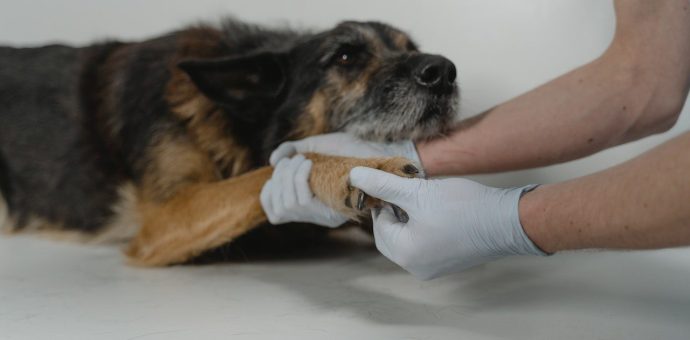
Why Declawing is Done and its Associates
Usually, it is done to guard against furniture damage or to protect people from being scratched. Declawing dogs, on the other hand, is a more painful surgery than declawing a cat since it involves removing not only the claws but also the bones that support them.
Medical Conditions:
Declawing dogs may be performed to address medical conditions like ingrown nails, infections or tumors. However, non-surgical treatments like nail trimming are usually good to go for these conditions.
Health Risks:
Declawing dogs may cause certain health risks, including amputation of the third phalanx can cause chronic pain, nerve damage, and arthritis. Declawing may cause some behavioral changes such as more aggression and more fear due to pain and stress associated with the procedure.
Read More >> 10 Easy Steps for Kitten Litter Box Training
Ethical and Moral Considerations:
Declawing dogs raises ethical and moral concerns, as some consider it a form of animal cruelty since it involves amputating an essential part of the dog’s anatomy.
Declawing dogs can create restrictions on their primary means of self-defense, leaving them vulnerable to injury or attack. The procedure is often performed for the owner’s convenience rather than the dog’s welfare.
Risks and Benefits of Declawing Dogs
Declawing dogs seem like a simple and quick solution, but it is important to understand the pros and cons or advantages and disadvantages before making a decision. Declawing dogs can result in a number of undesirable consequences, including :
Pain and Discomfort:
Declawing dogs can cause significant pain and discomfort during the recovery period. Dogs may experience swelling, bleeding, and difficulty walking.
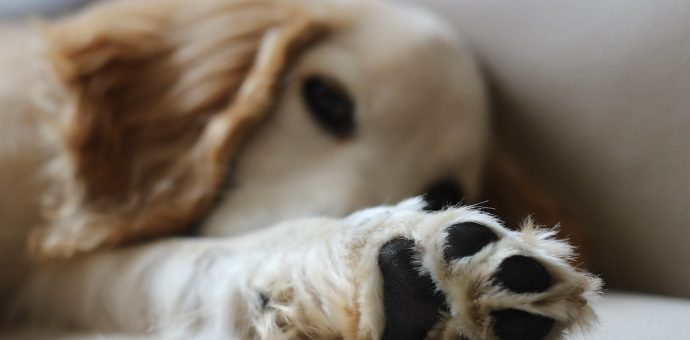
Behavioral Issues:
Removing a dog’s claws or we can say declawing dogs may cause several behavioral issues like biting, aggression and fear.
Increased Risk of Injury:
A declawed dog or declawing dogs is unable to defend themselves or climb to safety in dangerous situations.
On the other hand, there are some potential advantages of declawing dogs. These include:
- Protecting furniture and other household items from damage.
- Reducing the risk of scratches and injuries to humans.
However, it’s important to weigh these benefits against the potential risks and to consider alternative solutions, such as training or providing scratching posts.
Pros and Cons of Declawing Dogs
Before declawing dog it is necessary for dog owners to be aware about pros and cons of declawing dogs or must know the pros and cons of dew claw removal of dogs. Here we are listing some details:
|
Pros of Declawing Dogs |
Cons of Declawing Dogs |
|
Medical Reasons: Declawing may be necessary to treat medical conditions such as ingrown nails, infections, or tumors. |
Chronic Pain: Declawing involves amputation of the third phalanx of each toe, including the bone, joint, and ligament. This can lead to chronic pain, nerve damage and the development of arthritis. |
|
Preventing Destructive Behavior: Declawing may help prevent destructive behavior in dogs that scratch furniture or other objects. |
Behavioral Changes: Declawed dogs may experience behavioral changes, such as increased aggression or fear, as a result of the pain and stress associated with the surgery. |
|
Preventing Injuries: Declawing may prevent injuries to humans or other animals caused by scratching. |
Complications: The procedure carries the risk of complications such as bleeding, infection, and wound dehiscence. |
|
Allergies: Declawing may be an option for owners who are allergic to their dog’s claws or claw sheaths. By removing the claws, the amount of dander and other allergens that collect in the claws and surrounding areas may be reduced. |
Deprives Dogs of Their Defense Mechanism: Declawing deprives dogs of their primary means of self-defense, leaving them vulnerable to injury or attack. |
Why Declawing Dogs is a Harmful Practice
Many dog owners have doubted declawing their pets, thinking it is a painful and harmful surgery. Unfortunately, declawing dogs is a painful and risky procedure that can result in a number of medical concerns and behavioral disorders.
The Harmful Effects of Declawing Dogs
Declawing dogs can lead to numerous health issues and behavior problems in dogs. Some of these include:
Chronic pain and discomfort
Declawing dogs can cause chronic pain and discomfort due to nerve damage.
Litter box issues
Declawing dogs can lead to litter box issues, making it painful for dogs to scratch in the litter box. This can cause them to avoid using it altogether.
Aggression
Declawing can make dogs more aggressive due to the pain and discomfort they experience.
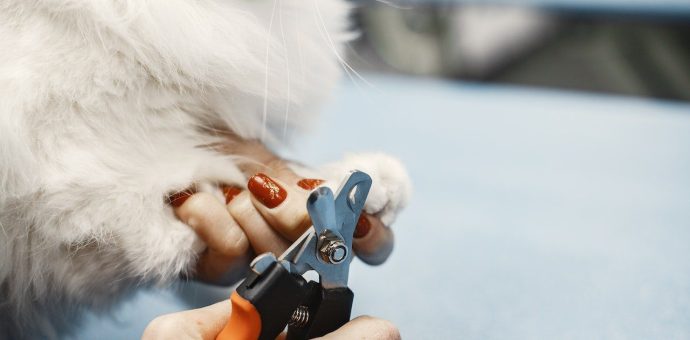
Difficulty walking
Declawing dogs faced difficulty in walking and running, as their claws play an essential role in their balance and stability.
Increased risk of infection
Declawing can increase the risk of infection, as the surgical site is exposed and vulnerable to bacteria.
Alternatives to Declawing Dogs
If you are worried about your dog damaging your furniture or scratching humans, these are several alternatives to declawing you must try:
Regular nail trimming
Regular nail trimming can keep your dog’s nails short and prevent them from scratching furniture or people.
Read More >> Healthy Cat Signs: Your ABC Guide to Feline Wellness
Train your dog
Teaching your dog to scratch in appropriate places and rewarding good behavior can help reduce the need for declawing.
Provide scratching posts
Providing your dog with a designated scratching post can help redirect their scratching behavior away from the furniture. These scratching posts can give them a safe and appropriate place to scratch and exercise their natural behaviors.
Soft Paws or Dog Nail Caps
Soft Paws are plastic nail caps that can be glued to your dog’s nails to prevent scratching.
Use deterrents
There are several commercial deterrents available that can be sprayed on furniture or other items to discourage scratching.
Bonus Tip
Grooming and Maintaining Dewclaws
Dewclaws, like the other claws on your dog’s paw, also require frequent grooming and maintenance. It’s crucial to keep dewclaws trimmed to minimize them becoming excessively long, which may cause discomfort or even injury.
You may trim your dog’s dewclaws with a regular dog nail trimmer, but be careful not to cut the quick, which is the vein that runs through the nail. If your dog’s dewclaws are unusually long or curled, then do professionally trimmed by a professional groomer or veterinarian.
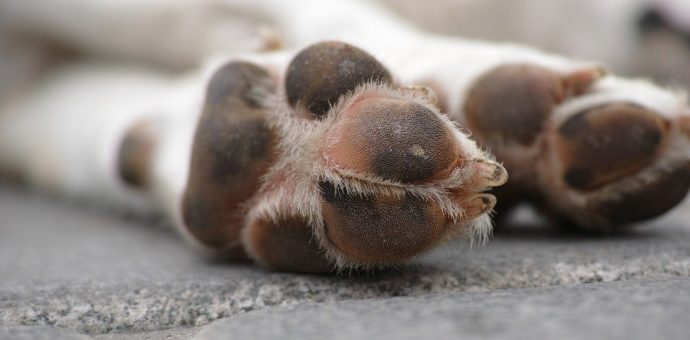
Conclusion
Declawing dogs is a challenging as well as painful process. Declawing may cause a number of health and behavioral concerns. In this guide we have offered a comprehensive overview of declawing and its alternatives, to help dog owners while making decisions regarding the welfare of their dogs.
As responsible dog owners, it is our duty to give safe and healthy places for their natural activities. Non-surgical options should be considered more likely. Surgery should be performed only after a thorough analysis of potential health risks and ethical concerns.
Finally, the dog’s well-being should be at first priority from our side. Any decision regarding declawing dogs should be made after a sincere and detailed consultation with a veterinarian and in compliance with animal welfare quality standards.
In summary, understanding the function and importance of dog dewclaws and proper grooming techniques can help pet owners prevent potential problems and ensure their dogs’ long-term comfort and well-being.
By exploring alternatives to declawing and taking the time to care for dewclaws, pet owners can help ensure their dogs lead happy and healthy lives.

